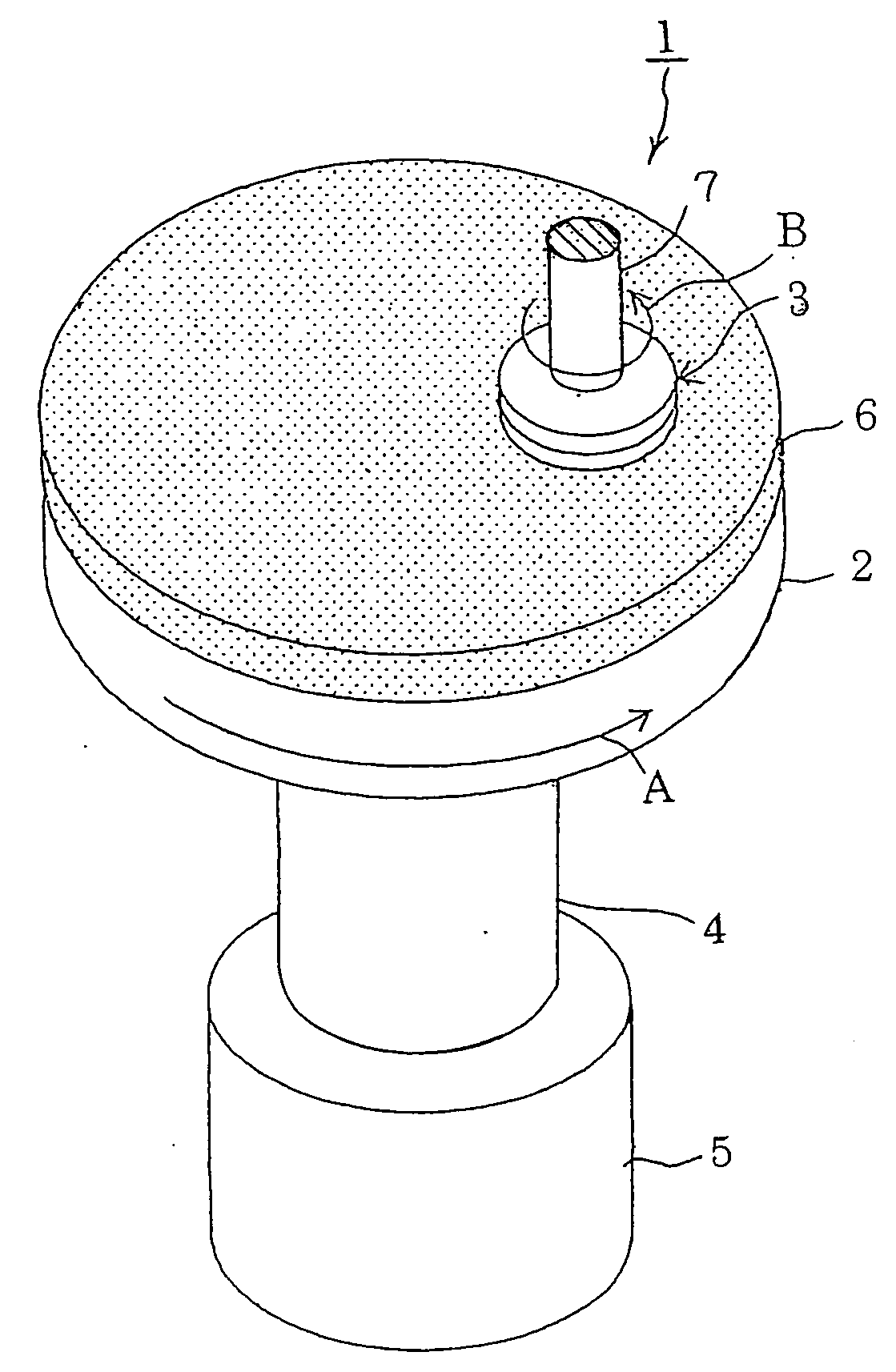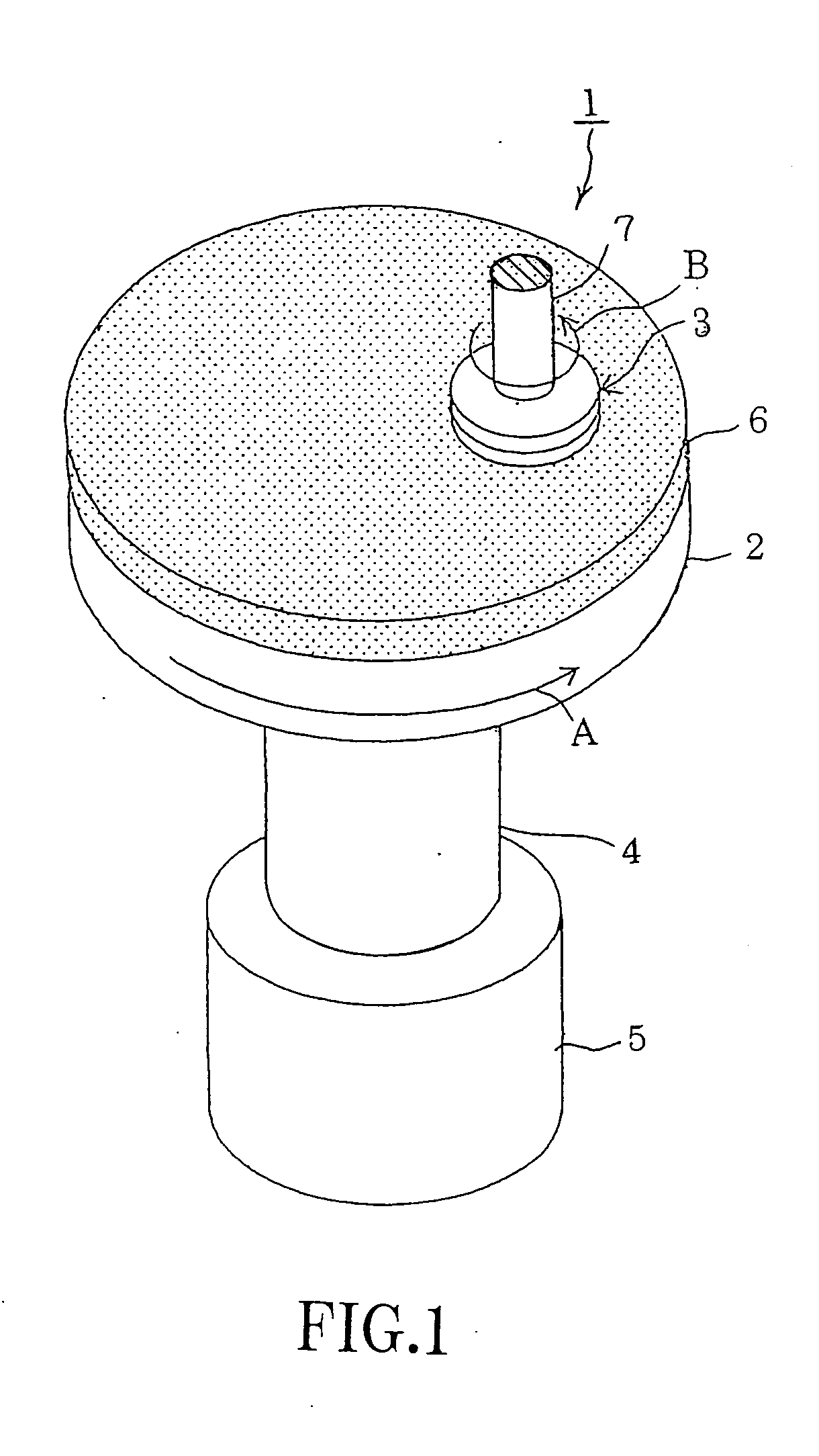Wafer polish monitoring method and device
a monitoring method and polish technology, applied in the direction of semiconductor/solid-state device testing/measurement, manufacturing tools, lapping machines, etc., can solve the problems of poor signal-to-noise ratio, difficult to detect the end point of each polishing process with precision, reflected light scattering, etc., to achieve easy detection of the characteristic impedance of the microstrip line, easy to form, and easy to bury
- Summary
- Abstract
- Description
- Claims
- Application Information
AI Technical Summary
Benefits of technology
Problems solved by technology
Method used
Image
Examples
first embodiment
[0096]The following is a description of a preferred embodiment of the present invention, with reference to the accompanying drawings. FIG. 1 is a perspective view of a chemical mechanical polishing device equipped with a microstrip line. FIG. 2 is a configuration diagram illustrates the connection between the microstrip line mounted on the upper face portion of the platen and a network analyzer.
[0097]First, the wafer polish monitoring method and a configuration of the device in accordance with this embodiment are described, with a chemical mechanical polishing device as a processing device being taken as an example. In FIG. 1, a chemical mechanical polishing device 1 mainly includes a platen 2 and a polishing head 3.
[0098]The platen 2 is formed in a disk-like form. A rotation axis 4 is connected to the center of the bottom face of the platen 2, and the platen 2 rotates in the direction indicated by an arrow A when a motor 5 is driven. A polishing pad 6 is bonded onto the upper face ...
PUM
| Property | Measurement | Unit |
|---|---|---|
| resistance | aaaaa | aaaaa |
| frequency | aaaaa | aaaaa |
| frequency | aaaaa | aaaaa |
Abstract
Description
Claims
Application Information
 Login to View More
Login to View More - R&D
- Intellectual Property
- Life Sciences
- Materials
- Tech Scout
- Unparalleled Data Quality
- Higher Quality Content
- 60% Fewer Hallucinations
Browse by: Latest US Patents, China's latest patents, Technical Efficacy Thesaurus, Application Domain, Technology Topic, Popular Technical Reports.
© 2025 PatSnap. All rights reserved.Legal|Privacy policy|Modern Slavery Act Transparency Statement|Sitemap|About US| Contact US: help@patsnap.com



